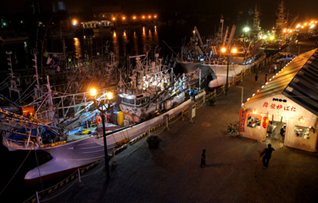By
Published on
July 11, 2016

In the June 23 SeafoodSourcewebinar, “Asia Rising: Discovering Seafood Trends and Opportunities Beyond the Headlines," a participant commented, “I'd be interested to know what are the main commercial ports (for seafood) in both Japan and China – and whether the fishing or cargo vessels landing there are usually national vessels or foreign.” This commentary seeks to answer that question as it related to Japan.
As for foreign vessels offloading catches, Mombetsu and Wakkanai, ports on the north coast of the Hokkaido, have in past years directly received Russian crab vessels. Much of the offloaded crab was IUU, until bilateral agreements taking effect in 2002 and 2014, respectively, banned Russian vessels from directly landing catches in Japan, and required them to present a Russian certificate of origin for crab shipments. Much of the IUU catch is now routed through Busan, South Korea, where is commingled with documented crab and re-exported to the U.S.A.
Another port where many foreign fishing vessels offload is Hakata in Fukuoka Prefecture on Kyushu Island. Many Korean and Chinese fishing vessels unload catches there, and transport vessels from these countries also frequently visit.
Yaezu port in Shizuoka Prefecture is Japan’s biggest fishing port for tuna landings. Many large Japanese distant-water tuna longliners operating in the Indian, Atlantic and Pacific Oceans unload their catches here.
As for landings, Kushiro, on the Pacific coast of Hokkaido, claims Japan’s highest volume, mainly due to large hauls of Pacific saury. Many squid jiggers also operate offshore, lighting up the horizon at night with high-power lamps. Hakodate is another major base for squid vessels, as well as for dredging and farming of large scallops.
Hiranai in Aomori Prefecture’s Mutsu Bay, is the top port for cultivated scallops with average landings of about 30 metric tons per day. The scallops are hauled up from lines suspended in the bay. No dredging is required, so this is an eco-friendly activity. Hachinohe is another major fishing port in Aomori Prefecture handling much olive flounder and squid.
Kessenuma is the top port in Tohoku, the north Pacific coast of Honshu that was hit by the tsunami. Shark is a specialty here, and is used in shark-fin soup and in fluffy fishcake called hampen. This is also the top port for bonito and a major port for mackerel and Pacific saury.
Ishimaki, in Miyagi Prefecture, is an oyster and Japan’s main silver salmon cultivation center.
Choshi, in Chiba prefecture near Tokyo, is a major bonito port. Its proximity to the capital allows easy shipping of fresh seafood. Kochi, on Shikoku Island, and Makurazaki on Kyushu are also famous for famous for skipjack pole-and-line fishing vessels.
Hiroshima is famous for oyster cultivation, edging out Miyagi Prefecture in volume.
Shimonoseki port in Yamaguchi Prefecture is famous for landing puffer fish from autumn to winter, but is also a center for land-based pufferfish cultivation in tanks.
Kagoshima and Ehime lead cultivation of sea bream and yellowtail, Japan’s highest value farmed fish export.

No comments:
Post a Comment